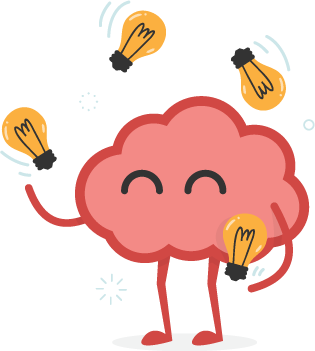As mentioned in Part One of this blog series, children and teens with dyslexia have a lot to offer the world. The reason diagnoses such as dyslexia are often labeled “learning differences” rather than “learning disabilities” in today’s society is because research has shown that the very thing that makes reading and writing a challenge for these students also helps them make unique contributions to the world.
Read on to discover five more distinctive learning strengths that children with dyslexia often have.
6) Insatiable Curiosity
You might have noticed it when your child was in the toddler stage: that incessant “why” that seemed to fall out of his or her mouth following every possible action. That curious nature often continues throughout the whole life of those with dyslexia. Albert Einstein, who many have surmised may have had dyslexia, once noted, “I have no special talents, I am only passionately curious.”
Teaching to This Strength in Your Homeschool:
Homeschooling can be the ideal option for curious students because it offers the flexibility to allow them to follow their curiosities as far as they go. While traditional schooling has allotted time periods for studying a concept, homeschoolers have no such limitation. If you begin studying something that your child shows a special interest in, don’t end your study where the chapter does. Help your student find additional resources and avenues to learn everything he/she can about the subject that has piqued their interest.
7) A Penchant for Storytelling
Have you ever caught that glimmer in your child’s eye as they are staring into space? You probably recognize that dreamy look as the signal that they will have a story to share with you sometime in the near future. Just because your child or teen struggles to write quickly or accurately enough to put their thoughts down doesn’t mean that fantastic tales aren’t regularly spinning around in their heads.
Teaching to This Strength in Your Homeschool:
Don’t get too caught up with the idea that writing has to take place on paper or a keyboard. While you should definitely still work on building traditional writing skills, allow your child’s creativity to take the form of oral storytelling too. Assistive technology, such as speech-to-text software, can even make it possible to turn those verbal tales into written works.
One mother describes how Time4Learning curriculum changed the entire game for her 4th grade son with dyslexia.
8) Learning by Doing
While some people may be able to learn to jump rope, skip rocks, or juggle by intently watching other people perform these tasks, it’s unlikely that your child with dyslexia masters new skills that way. Experiential learning — learning by doing — seems to be the preferred method of many people with reading and writing impairments. They seem to need to integrate, rather than compartmentalize, new concepts to be able to truly retain them.
Teaching to This Strength in Your Homeschool:
If you are a traditional, left-brained type of learner, then homeschooling a child who needs to get hands-on with their lessons can be a new challenge. The best homeschool curriculum for a student with dyslexia is often the one that introduces concepts in multiple ways and allows learners to incorporate what they are learning by using the knowledge in a real-world scenario.
9) Superior Multitasking Skills
Visual-spatial learners, a category that many children with dyslexia fit in, seem to have a better-than-average ability to take in information from simultaneous sources. Have you ever noticed that your child with dyslexia can be fully engrossed in building a Lego™ masterpiece while still taking in the full plot of a story you are reading aloud? In fact, kinesthetic movement while processing information often seems to improve these students’ retention of concepts!
Teaching to This Strength in Your Homeschool:
Your child’s learning difference likely predisposes him or her to need to “move and groove” while learning. Requiring your child or teen to sit in a specific place, to “work quietly,” or to “stop fidgeting” may prove disastrous for their homeschool experience. Just because your child is playing with a toy, sitting upside down on the couch, or creating a house of cards while listening to the lesson does not mean he/she isn’t paying attention. In fact, that extra movement may just be exactly what is allowing them to better process the information they are hearing.
10) Critical Thinking
People with strong critical thinking skills are in high demand in today’s workforce. Someone who sees connections between pieces, asks the right questions, and can separate facts from assumptions are a valuable asset to any employer. These are also skills that people with dyslexia often have in spades!
Teaching to This Strength in Your Homeschool:
Is your child’s science curriculum often their favorite part of the homeschool day? That shouldn’t be surprising. The whole study of science and the nature of the universe is tied to hypothesis, experimentation, and investigation — strengths of students with dyslexia. Don’t be afraid to put a premium on science education in your homeschool. In fact, almost every subject can be tied to science in some way, so why not customize your curriculum approach to your science-loving homeschooler?
Isn’t it wonderful that it took two whole blog posts to cover all the strengths that children and teens with dyslexia excel in? By focusing on the positive sides of your homeschooler’s diagnosis you can not only teach in a way that optimizes their potential, but also consistently increase their confidence in their unique way of seeing the world.








Thank you so much for this information. It has enlighten me.
Thanks for stopping by, Lillian! We’re happy to help! 🙂
Good work explaining this. Thank you.
Glad it was helpful, Carol! Thanks! 🙂